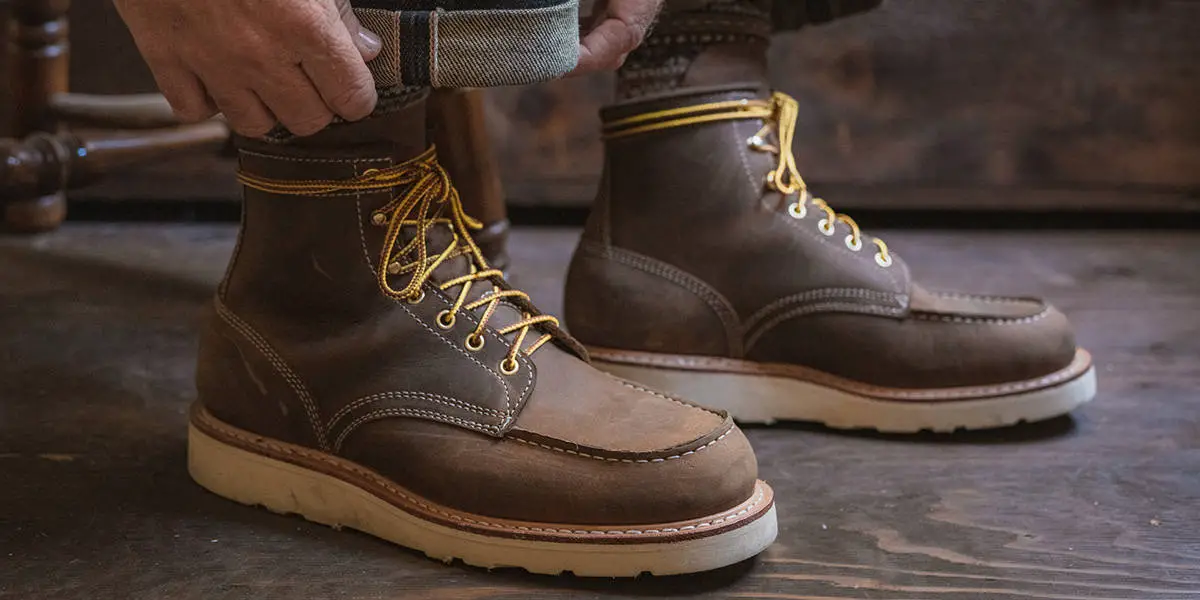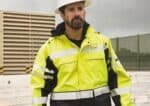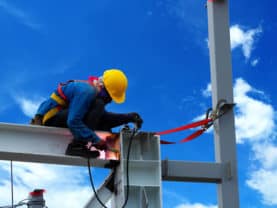 The rate of casualties is very high when you are working at height. Workers from construction and maintenance jobs are particularly susceptible to these dangers. So if you work these jobs, you need to think about ways you can use to keep yourself or those who work for you safely.
The rate of casualties is very high when you are working at height. Workers from construction and maintenance jobs are particularly susceptible to these dangers. So if you work these jobs, you need to think about ways you can use to keep yourself or those who work for you safely.
Here in this article, we are going to have “the talk” about ways you can do so. We are going to notify you about the best work at height safety tips.
Top 10 Work At Height Safety Tips
Now, follow these safety rules and we promise you will be safe, as none of us can magically replace the ground with cushion to ensure the person falling lands safely on them.
1.) Equipment to Hold You
Using the right equipment in the right place will make your life much easier. It will help you to work on your task without thinking about the equipment you are using is sufficient enough to hold your weight. Depending on how high you need to work on a ladder may be your go-to equipment, but that can change and you need to get scaffolding.
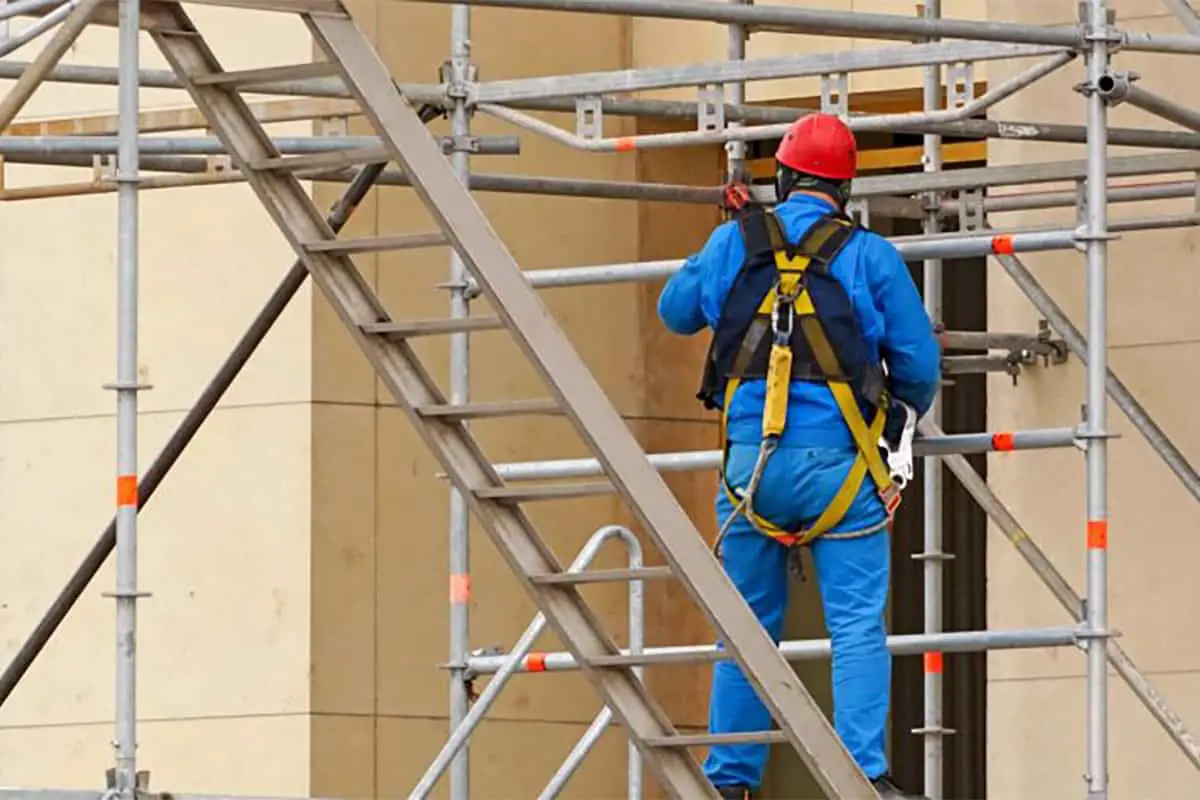
Sometimes scaffolding is not enough, and you need to use an access tower or work towers whichever the job demands. If you have them you have to use them or hire these types of equipment, as it will keep you out of harm’s way.
You will have to decide that for your workers after accessing the height. You need to make the best decision so that they have the best chance of completing the work unharmed.
2.) Body Harness to Keep you Safe
A full-body harness is what will keep you safe when you are at a height, doing your job. The material must provide great comfort and must not get damaged from simple usage. If it costs you a lot more money, then invest as you cannot let money stand in the way of safety.
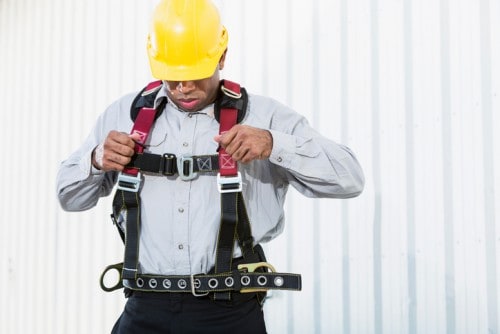
The work that your workers will be doing in height has to dictate the kind of harness that you buy. If you do wield jobs, then your requirements are different than if you were involved in construction.
You also have to decide with lanyards as the more height you need to climb the standard six-inch lanyard will not be useful. Go for retractable ones as that can help your workers truly.
3.) Railings to Hold
It is the most efficient way of ensuring your workers’ safety. You can order railings as you want them and your workers can just stay within the safe space and do their work.
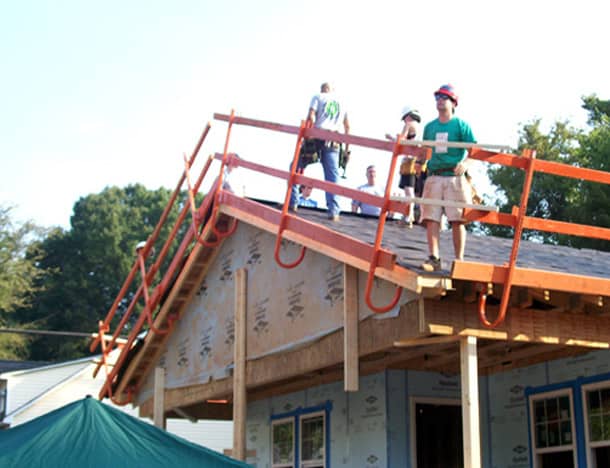
These are the best things to use when you are doing work on the roof. You can get railing for any type of roof and forget about your worry of workers falling through them and injuring them gravely.
4.) Regulations on Roofing
You cannot hope to work safely on the roof if you have no idea about the regulations. Knowing when you can use warning lines on the roof is a must, but even then that is no guarantee for protection from fall.
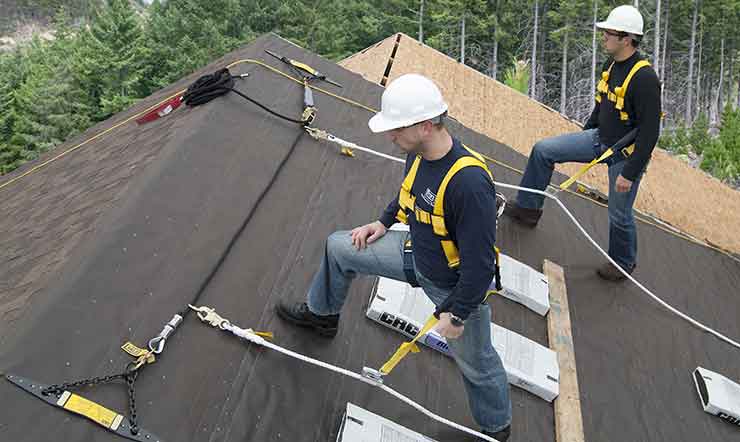
Do not jeopardize the lives of your workers; make sure you comprehend the requirements that are necessary to give safety to the workers.
5.) Clear on Fall Distance
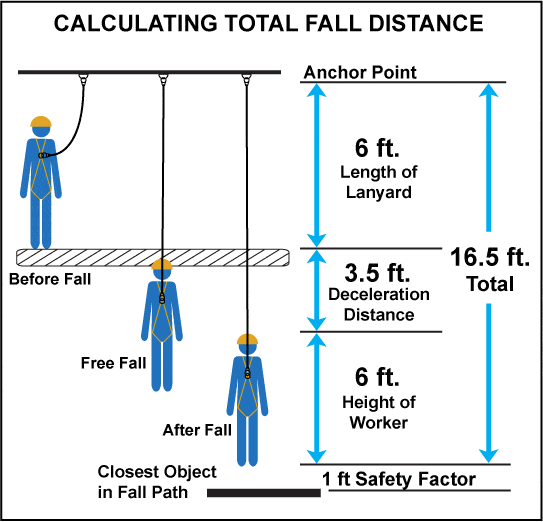
None of your security measures will matter if you do not understand fall distance. Depending on what height you are working on, you will have to adjust the lanyard; otherwise, you will lose the advantage of using such life-saving pieces of equipment.
6.) Safety Training to Workers
Nothing beats rigorous training, collect the necessary information that you need to do the work and then pass it on to your workers. Give them the training that will help them to keep their life and work for you effectively.
7.) Shoes to Provide Grip
Shoes are another important element that provides safety. There are regulations for shoes as well and make sure that your workers are wearing them before they ascend the climb to do their work. Boots provide great grip, protection, and support that can be a lot of help to the workers.
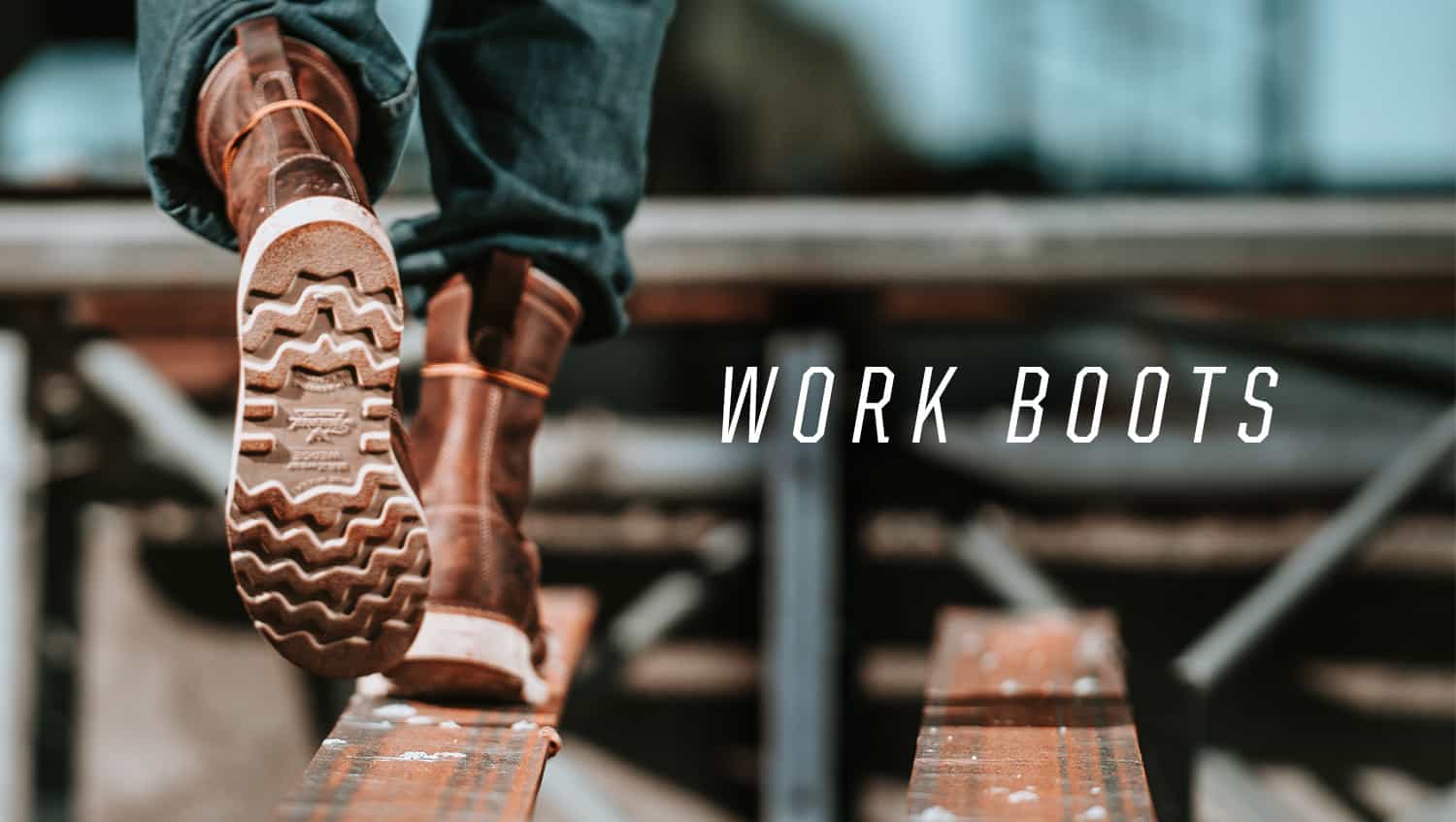
The shoes will help them save their feet from water, walk without slipping on slippery surfaces, and save them from electrocution because the soles of the boots get made from superior rubber.
8.) Hanging Safety Nets to Catch Falling Person
It is the most effective solution to the problems of falling. Hanging a safety net can give the workers a modicum of peace that other safety instruments might not. Hung close to where the workers are working it will infallibly catch the person who has lost their footing and plummeted towards the ground.
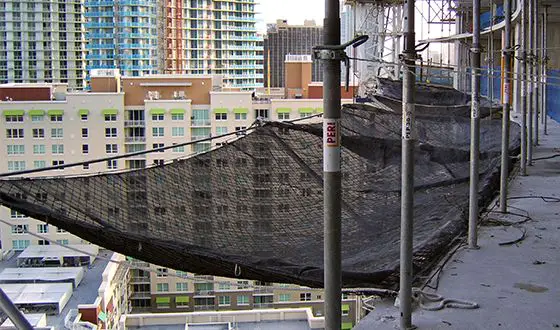
The net needs to cover a wider area so that it can catch the falling person. It is up to the person who sets up these nets to calculate how to hang them properly. The net needs to have a proper bounce so that the person falling on them does not injure themselves.
Workers involved in the roofing business and construction site are the ones who need it the most. Be sure to give your workers the maximum protection, and safety nets are the kind of protection they need to stay alive.
9.) Consider Air Bags to Land Safely
It is as close to swapping ground with a cushion as you can get, although there is nothing magical about that. It is very helpful in places where you do not have the space to hang a safety net or use a harness but protection is necessary so that you do not get injured after falling from a height.
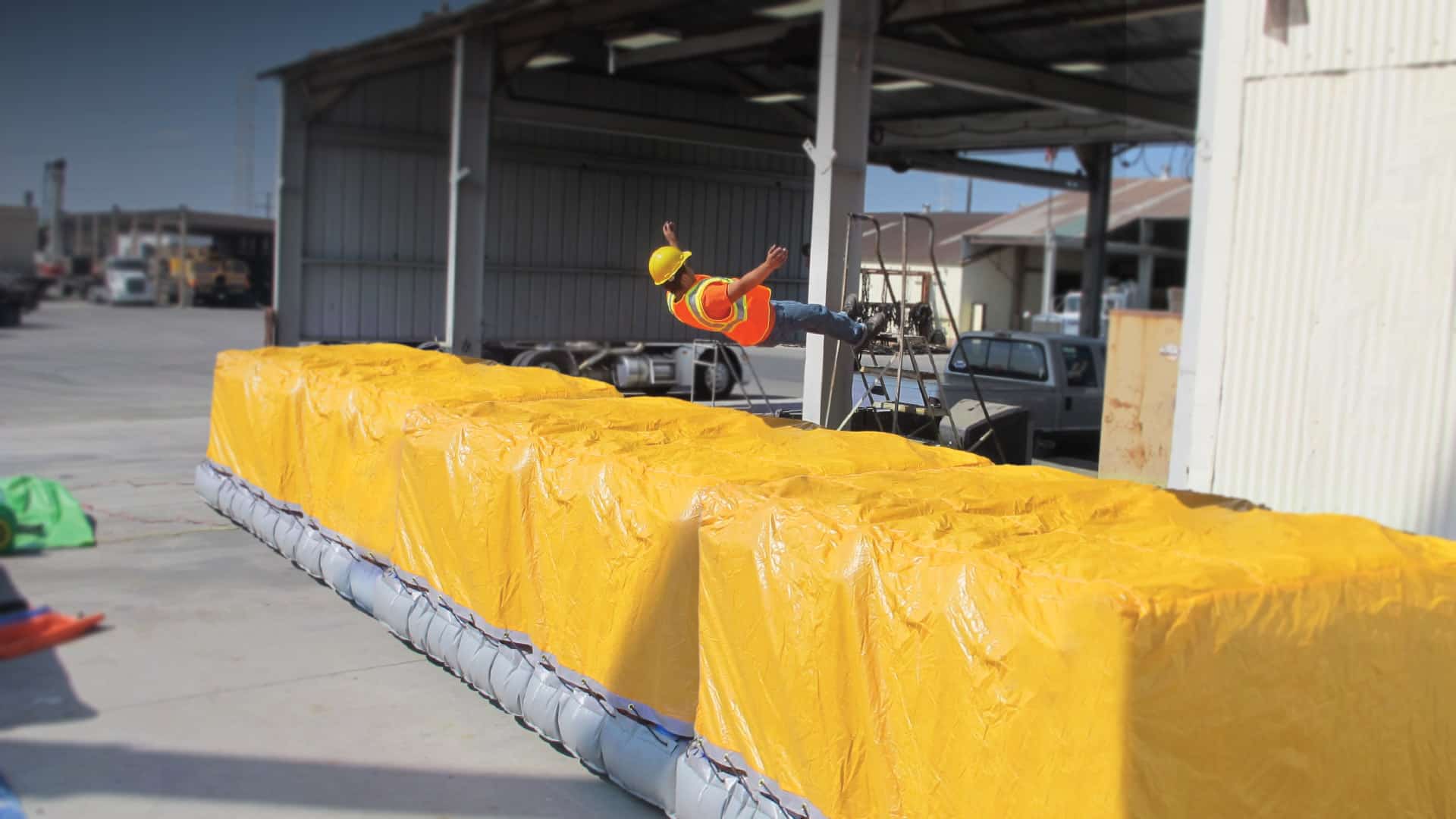
The airbags have to be set up by someone who knows how to do it; the air pressure has to be correct, and the material has to be strong to ensure the falling worker lands to safety.
Someone who has an idea about these things is ideal for setting up the airbags. Find out ways to set the bags properly, or the fall can become fatal to people who had lost control and are descending rapidly towards the ground.
10.) Weather Report
Working at height hazards, and the level of difficulty becomes more when workers have to endure bad weather conditions. If it is raining heavily or snowing, it is better to stop the work as the chance of an accident is very high. Extreme weather conditions can make your equipment malfunction and this will put your workers in greater danger.
Think about what you are up against and plan how you are going to tackle it as this will be crucial to saving people’s lives. We urge you to look at these tips and then decide what is more appropriate to your situation.
Things to Consider While Working on Heights
1.) The Perilous Job
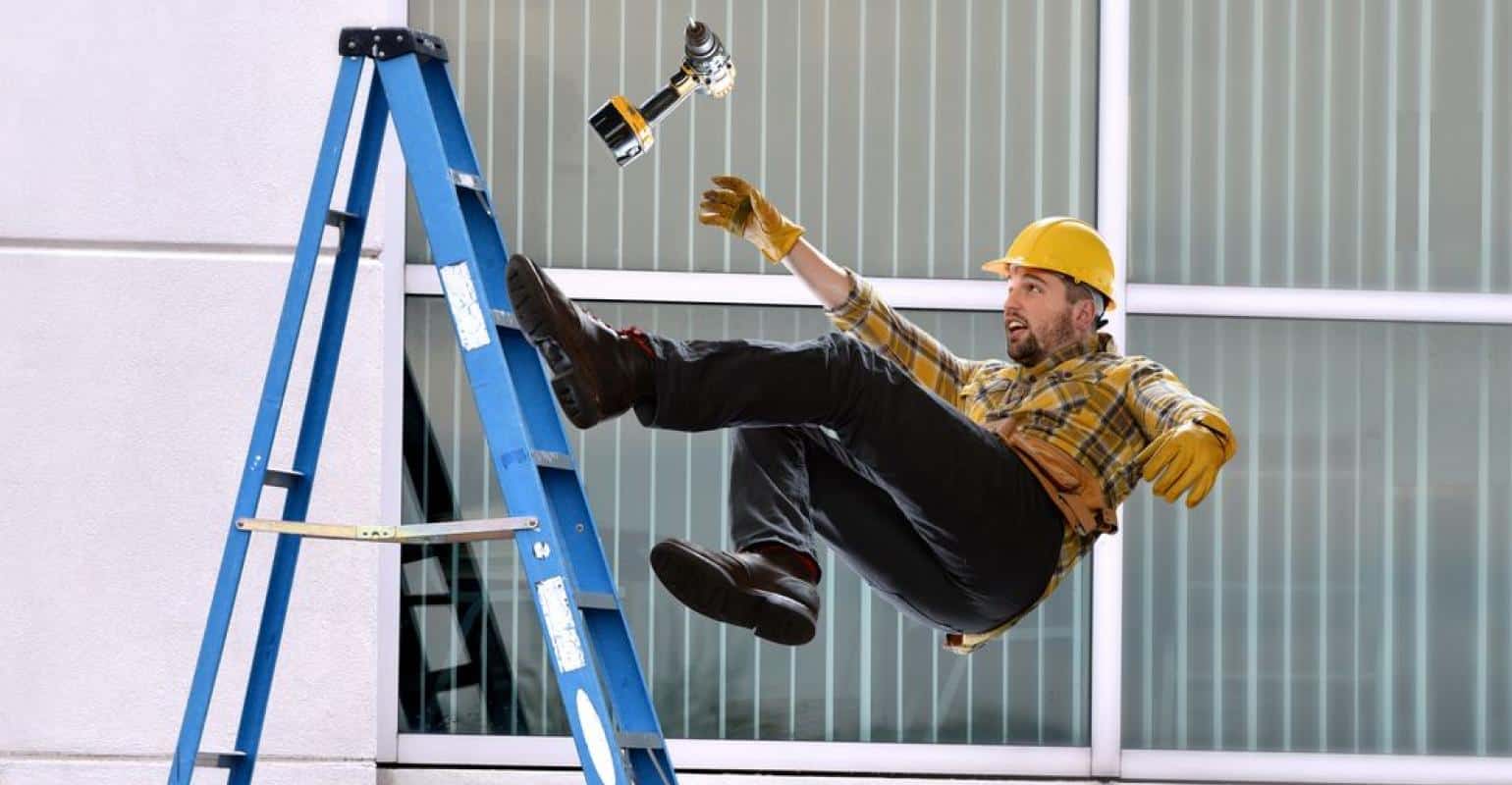
Suppose you are part of a maintenance team working to fix the roof and the entire thing caves. The fall can injure your limbs, or worse, your spine. Falling from a ladder, lift, and scaffolding are ways you get injured if you are not careful or not paying attention to your safety.
2.) Fatal Numbers
The numbers of people who get injured during working at height are staggering. Although steps are taken to minimize the risk level for the workers, the number is still rising. But the reason for rising fatality numbers is the introduction of inexperienced workers into the mix.
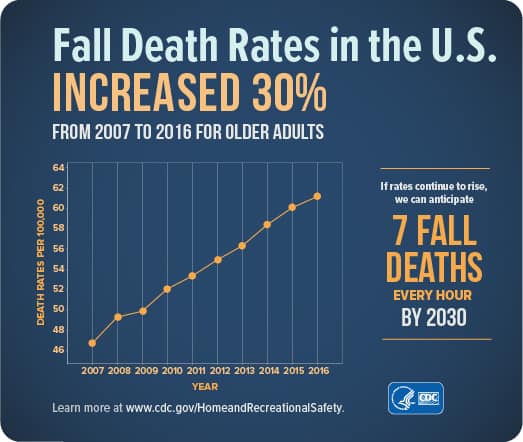
Data shows that in the U.S.A., workers working at height have died while working. The main reasons for the death are falls, electrocution, struck by object, and crushed or caught by falling structures or equipment. Although these figures refer to workers’ demise in the construction field but work in fields other than construction is also quite risky.
3.) Other Fields
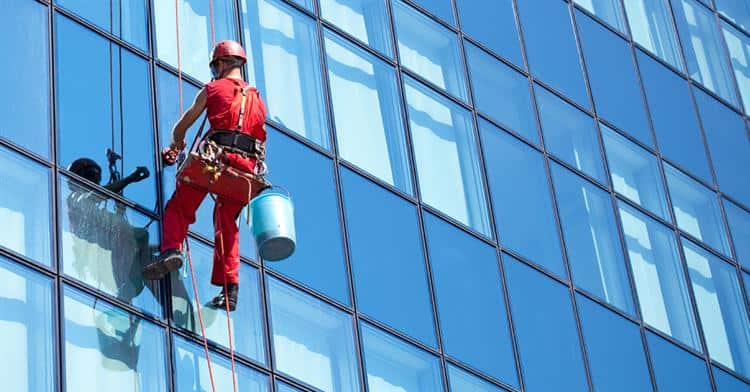
Professions like window cleaner, painters, and decorators are all included in the work at height list. The workers hired to do the job does not always have the proper training or sense of handling the types of equipment required. Inexperienced workers have to be trained and taught the risk of the job, and how they can carry out their job properly.
4.) Way of Escape
You will have to plan how you want to do the job and how safely can you use the types of equipment necessary to complete the job. You will also need to plan your method of escape if you feel that the situation is getting dangerous for you to continue the work.
Having a plan, accessing the situation, and executing the plan are the easiest ways that you can keep yourself safe in your work.
5.) Other Option
Wearing the proper kind of footwear is also the most effective way to avoid accidents. For example, there are construction boots and roofing boots available for professionals who are working in these fields.
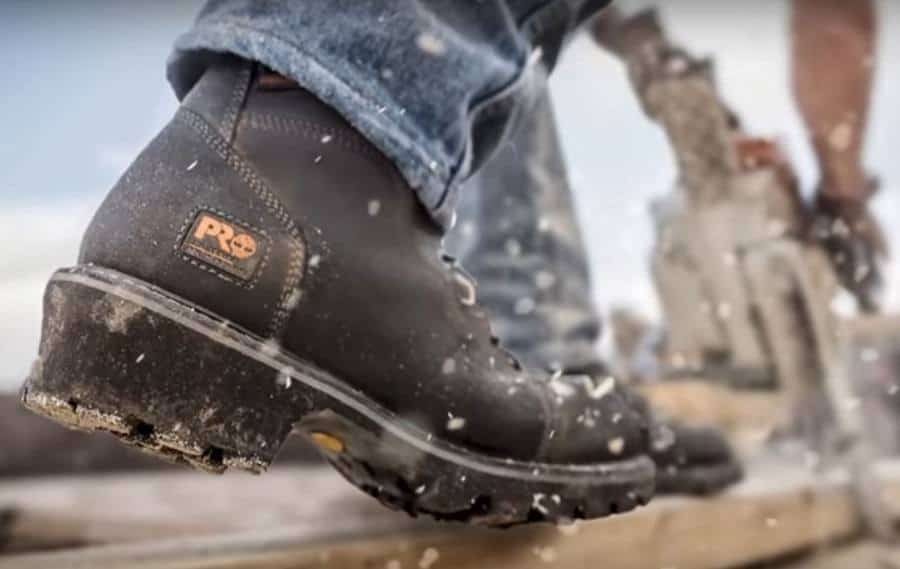
The boots get made in ways that will help you to maintain your balance, give you the grip that you need, protect your feet from accidents, and give you the confidence you need to carry on these hazardous jobs.
Other than these two types of boots, several other work boots are available for professionals to buy that will serve to protect the feet. The safety features of the boots will help you to move confidently in the hazard-riddled workplace.
Do’s and Don’ts of Work at Height
Accidents will happen if you are not careful enough to avoid them. We are listing things that you can use to stay safe.
You Must
→ Complete a major portion of your work in the ground.
→ Exercise caution when you work near a flimsy surface.
→ Make sure heavy objects must not fall on you.
→ Ensure that you can move from one point to another when working at a great height.
→ Handle the instruments properly to avoid injury.
→ Ensure the working condition of the instrument.
→ Wear the proper boots for your job.
You Mustn’t
⊗ Use ladders when the job requires you to do heavy work. Ladders must get used when the work is light.
⊗ Cram the ladder with other heavy objects when you are working on it.
⊗ Keep the ladder on delicate surfaces or have the ladders leaned against delicate support walls.
⊗ Stand tip-toed on the ladder trying to reach for objects placed far away from your reach.
⊗ Stand and witness rules getting violated.
Work at Height Safety Procedure On Behalf Of the Company
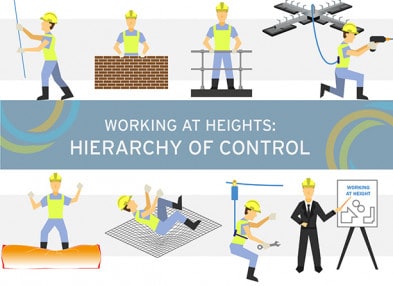
If you own a company that hires staff to do construction and repair works, then you should make sure that your staff is trained and taught how to be safe.
1.) Find Out– You must know the works that need to get done in height.
2.) Reduce– You can reduce the quantity of work that has to get done at height. You can do most of it in the ground and complete the rest taking it to the height.
3.) No Option– If this is not an option, then judge the risk involved and take precautions accordingly.
4.) Understand– You have to sort competent workers form incompetent ones, and it has to be the competent ones who should get to work in height.
5.) Share Details-Be honest with our employees and tell them all about the risk and discuss with them how the work can get done.
6.) Execution– The next big step will be to ensure that the plan made by you and your team, who will be working in height, gets followed to the tee. One way of doing it would be to write everything down and keep checking them once they get done.
7.) Assess– Keep assessing the risk levels because that will help you to plan better and avoid accidents and train new workers.
8.) Update– Update your staff and tell them about the rules that are in place to keep them safe and the importance of following them.
Work together with your employees and officials to make work a safe place for people who come to work for you.
The Problem of Falling Objects
When you are working at height, it is not just you who is facing a potential danger of falling and injuring yourself but also the people who are working in the ground. Any moment you can dislodge an object from its original place, and it can fall and crush someone working below.
That’s it then!
We hope that our compilation of threats and tips on work at height safety will bring some help to you. Knowing the threats waiting at the worksite will help you to plan the methods to parry them and ensure the safety of either your or workers working for you.




